What’s Powering the Healthcare Worker Strike Wave?
Nurses and others have won victories on the picket line they couldn’t achieve at the ballot box.
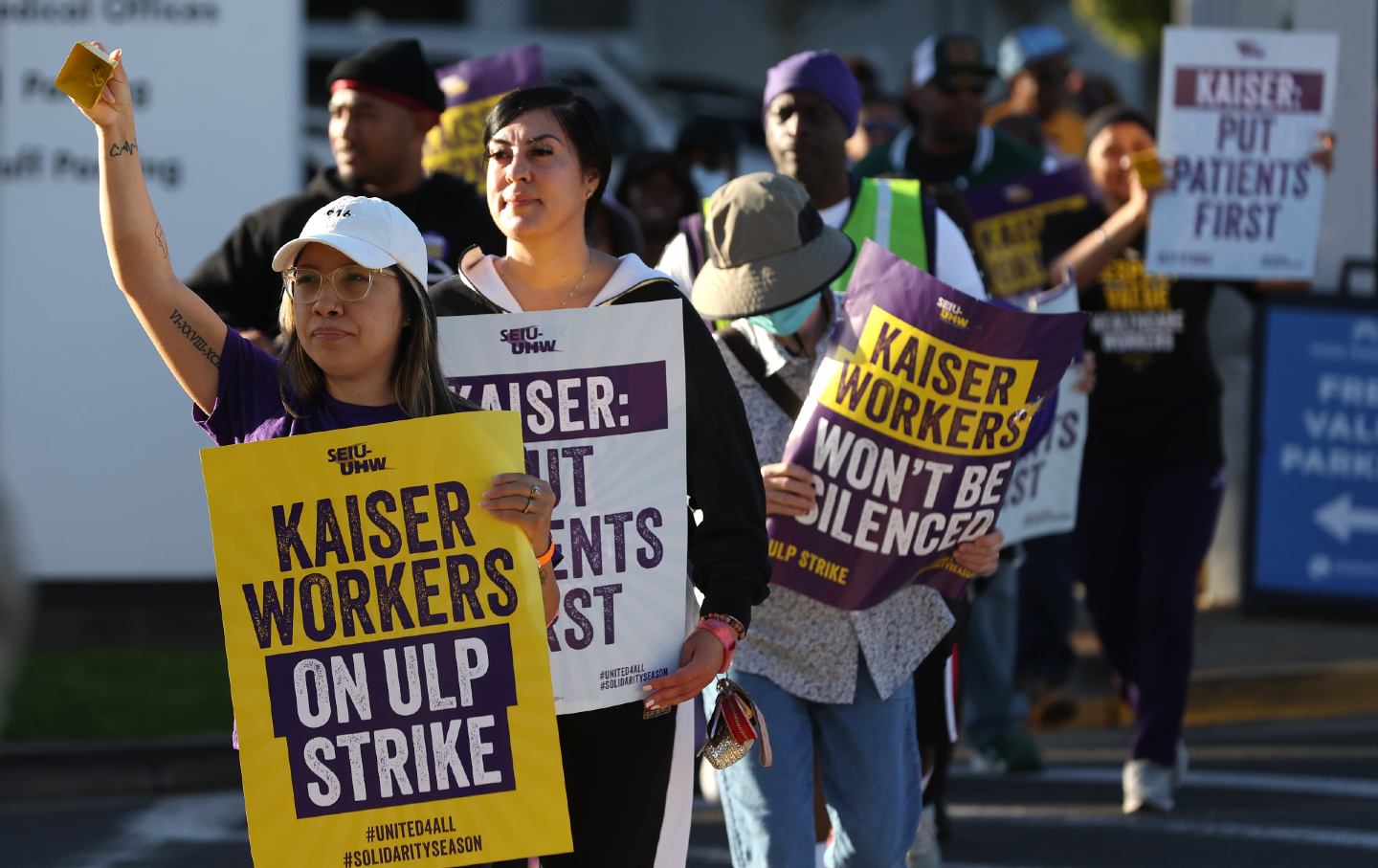
It’s not just actors, writers, and autoworkers powering this year’s strike wave in the United States. Healthcare workers, too, are flexing their collective muscles in greater numbers. And for good reason.
In just the last two months, 75,000 Kaiser workers in seven states and the District of Columbia struck, joining workers in other healthcare systems who marched on picket lines from New Jersey to Michigan to Los Angeles. Workers have had it with stagnating pay and soaring rent, fuel, and grocery bills. Inflation, while brutal on working-class pocketbooks, is good business for Wall Street, where CEOs have collected record profits.
For healthcare workers, you can tack on to those injustices the sacrifices they made under Covid: grueling work hours, dangerous short staffing, and basic safety equipment shortages—especially in the first months of the health crisis. Add to that staff burnout and a virus that killed more than 3,600 healthcare workers in just the first year of the pandemic.
As staff have been worked to the bone, they’re also outraged to see healthcare executives enrich themselves like never before. HCA Healthcare, the nation’s largest for-profit hospital system, reaped $5.64 billion in 2022 profits and paid CEO Sam Hazen $14.6 million—a 46 percent boost from 2018. Gregory Adams, CEO of Kaiser—technically a nonprofit—got $15.6 million richer the same year. The top five insurance companies reaped $40 billion in profits for their shareholders, while pharmaceutical companies like Pfizer executives celebrated 2022 as “a year in which we set all-time highs in several financial categories,” including a mind-boggling $31 billion in profits—more than triple its already obscene 2020 profit level.
Thus far in 2023—with still two months to go—more than 102,000 healthcare workers have hit the pavement, over double the previous year’s number, according to the Labor Action Tracker maintained by Cornell University’s School of Industrial and Labor Relations.
These strikes are much more than fights over wage and benefit levels; the source of the conflict lies in the fundamental problem of the for-profit healthcare system.
Overwhelmingly, safe staffing is the central issue motivating healthcare workers to walk. And by exercising their labor power, they are achieving breakthroughs.
In January, 7,000 nurses at New York City’s Montefiore Medical Center and Mount Sinai Hospital struck and won limits on patient-to-staff ratios. Enforceable “staffing ratios” are the Holy Grail for frontline caregivers, the most concrete way to ensure quality bedside care.
The staffing ratio fight is the most acute site of conflict in the universal battle of patients versus profits. Ratios are an abomination to hospital executives because they act as a roadblock to their austerity business plans. For the last two decades, healthcare unions have fought relentlessly in state legislatures to win staffing ratio language—only to fall short as big business and political allies repeatedly have watered down and rejected one safe staffing law after another. Just earlier this year, lawmakers in Minnesota—where Democrats control the legislative and executive branches—caved to pressure from Mayo Clinic executives and rejected a safe staffing law. Today, only California and Oregon have comprehensive staffing ratio laws, with more limited regulations in New York and Massachusetts.
In securing ratios in their contract, the Montefiore and Sinai nurses won through labor power what they and their compatriots largely have been unable to achieve in the political arena. “The fact that we have an enforceable limit on the number of patients to care for at once is 100 percent life-changing, literally and figuratively,” said Sinai nurse Erin Hogan. “I think I will actually be able to go home and sleep at night, knowing that I was able to provide quality care for my patients.
“These hospitals totally underestimated us nurses. We called their bluff. We refused to back down and stood in solidarity on the picket lines,” she said.
Just over the state line in New Jersey, safe staffing is the central issue at the longest healthcare strike on the US mainland this year, now entering its fourth month. In August 1,700 nurses at Robert Wood Johnson (RWJ) University Hospital, a 965-bed academic medical center associated with the medical school at Rutgers and a level-one trauma center, struck over unsafe staffing. “Sometimes I’d look at a patient’s face and know that I won’t be able to maybe help feed them when they need to be fed…or clean them when they need to be cleaned. It is distressing, and depressing for us,” nurse Sophia Moccio told Jacobin.
Popular
“swipe left below to view more authors”Swipe →The nurses, members of United Steelworkers Local 4-200, want staffing ratios. But hospital executives have dug in, spending more than a million dollars a day on strikebreakers, securing court injunctions to limit picketing, and cutting off the workers’ health insurance. Nurses appealed to state Democratic political leaders—only to discover that the hospital executives had beaten them to it.
“When you say tightly connected, you can’t even put a credit card in between them,” Carol Tanzi, one of the nurse strike leaders, said of the relationship between state political leaders and RWJ hospital executives. “We didn’t understand what fight we were fighting. we didn’t understand the interconnected dealings. Our CEO, Mark Manigan, is apparently very close personal friends with Phil Murphy, our governor, who has been largely absent and silent on this matter. Claiming to be a union progressive governor is a joke at this point.”
On October 27, Senator Bernie Sanders (I-Vt.) convened a field hearing in New Brunswick to give much-needed airtime to the striking nurses. Tellingly, no other members of his Senate Committee on Health, Education, Labor and Pensions—Democrat or Republican—chose to attend.
Kaiser workers nationwide had greater success with their three-day strike last month spanning clinics and hospitals from coast to coast. The 75,000-worker strike—the largest healthcare walkout in US history—“was so large and the turnout was so immense because of the anger and frustration that’s built up among my coworkers over those three and a half, four years now of Covid and having to deal with short staffing and a lack of safety protocols,” said Ethan Ruskin, a 22-year health educator and a rank-and-file activist in his Service Employees International Union (SEIU) chapter at Kaiser San Jose Medical Center.
Two of Ruskin’s SEIU coworkers at San Jose died from Covid, and Ruskin said that in making the rounds leading up to the bargaining, “folks were so fed up and frustrated. They were asking me when, not if, we were going to go on strike.”
The same frustration was palpable in Colorado. Clinic nurse and SEIU activist Tonya Stoner said, “It was easy when we were talking to people to say, ‘Are you angry? What is going on in your department? What kind of care are these patients getting?’ And people said it’s unacceptable.” A few workers were scared to strike, but overall “they were angry.”
In the last four years, staff left as Kaiser wages failed to account for the rising cost of living. While some healthcare employers reopened contracts to give pay raises during the pandemic, Kaiser did not.
“We could make $10 to $20 an hour more at just about any other institution doing the exact same care that we’d be doing at Kaiser,” said Seattle outpatient surgery nurse and SEIU member Jessica Wolfe. Her coworker, environmental service worker Christine Muña, typically must work 96 hours every two weeks to pay her bills. Muña related how a coworker just left for a comparable job at a hospital one mile away. It paid $7 an hour more.
In Colorado, Stoner noted that before the strike, one coworker, a mother of two children, was living out of her car, while another was staying overnight in a Kaiser parking lot.
Nationally, Kaiser workers won substantial wage gains—21 percent over four years, with minimum wages going in the next two years to $25 an hour in California and $23 an hour in other states. Local agreements may add on to those economic packages. Workers also won stronger protections against subcontracting and outsourcing.
But it would be a gross oversimplification to reduce Kaiser and other battles to contests over dollars alone. More money for workers means better, more stable staffing, and that translates into better care. The recent healthcare strikes are, at their core, contests over what kind of healthcare system we want in the United States—a profit-driven system that treats healthcare as a commodity, to be bought and sold, or a social good accessible to all.
Covid brought this long-standing conflict into stark relief, along with a second factor: When progressive political leaders back-shelved the fight for universal healthcare, it took pressure off executives to hold back their worst impulses, according to several workers I heard from.
“If our government had been working as it should and not be profit- and favor-driven, we would have had legislation 20 years ago for safe staffing ratios. I wouldn’t have to be fighting for it in my contract,” New Jersey strike leader Tanzi said.
Philadelphia nurse Marty Harrison, vice president of the Temple University Hospital Nurses Association, recalled the electricity around Bernie Sanders’s 2020 run for president, and in particular the momentum his huge rallies brought to the Medicare for All fight. But when Sanders withdrew from the race in the spring, under pressure from Democratic Party leaders and as Covid surged, “I felt so abandoned by him,” Harrison told the podcast On Strike. “Once he did that, once he stopped running for president, nobody cared about what he said anymore.”
As a candidate, Joe Biden disparaged Medicare for All, and progressives in Congress rejected grassroots calls to force the political establishment to take up the issue. By the time of the 2020 election, the core healthcare question—for profit, or for patients?—had disappeared from the political establishment’s radar.
This year’s healthcare strikes are, in part, workers stepping up to fill that political vacuum. Future healthcare strikes are likely to continue to fill that space, because even solid victories won on the picket line are not going to resolve the fundamental struggle over the nature of healthcare in America. That will require a bigger battle, shaped and led by workers at the grassroots.
Every strike alters the balance of power between workers and their bosses. For healthcare workers, the experience builds confidence that they can—and indeed must—fight for quality care at both the bedside and on the sidewalk. In doing so, it opens wider horizons for workers to see the power of exercising the strike weapon—for not just better union contracts but also the systemic change we so urgently need.
Thank you for reading The Nation
We hope you enjoyed the story you just read, just one of the many incisive, deeply-reported articles we publish daily. Now more than ever, we need fearless journalism that shifts the needle on important issues, uncovers malfeasance and corruption, and uplifts voices and perspectives that often go unheard in mainstream media.
Throughout this critical election year and a time of media austerity and renewed campus activism and rising labor organizing, independent journalism that gets to the heart of the matter is more critical than ever before. Donate right now and help us hold the powerful accountable, shine a light on issues that would otherwise be swept under the rug, and build a more just and equitable future.
For nearly 160 years, The Nation has stood for truth, justice, and moral clarity. As a reader-supported publication, we are not beholden to the whims of advertisers or a corporate owner. But it does take financial resources to report on stories that may take weeks or months to properly investigate, thoroughly edit and fact-check articles, and get our stories into the hands of readers.
Donate today and stand with us for a better future. Thank you for being a supporter of independent journalism.
More from The Nation
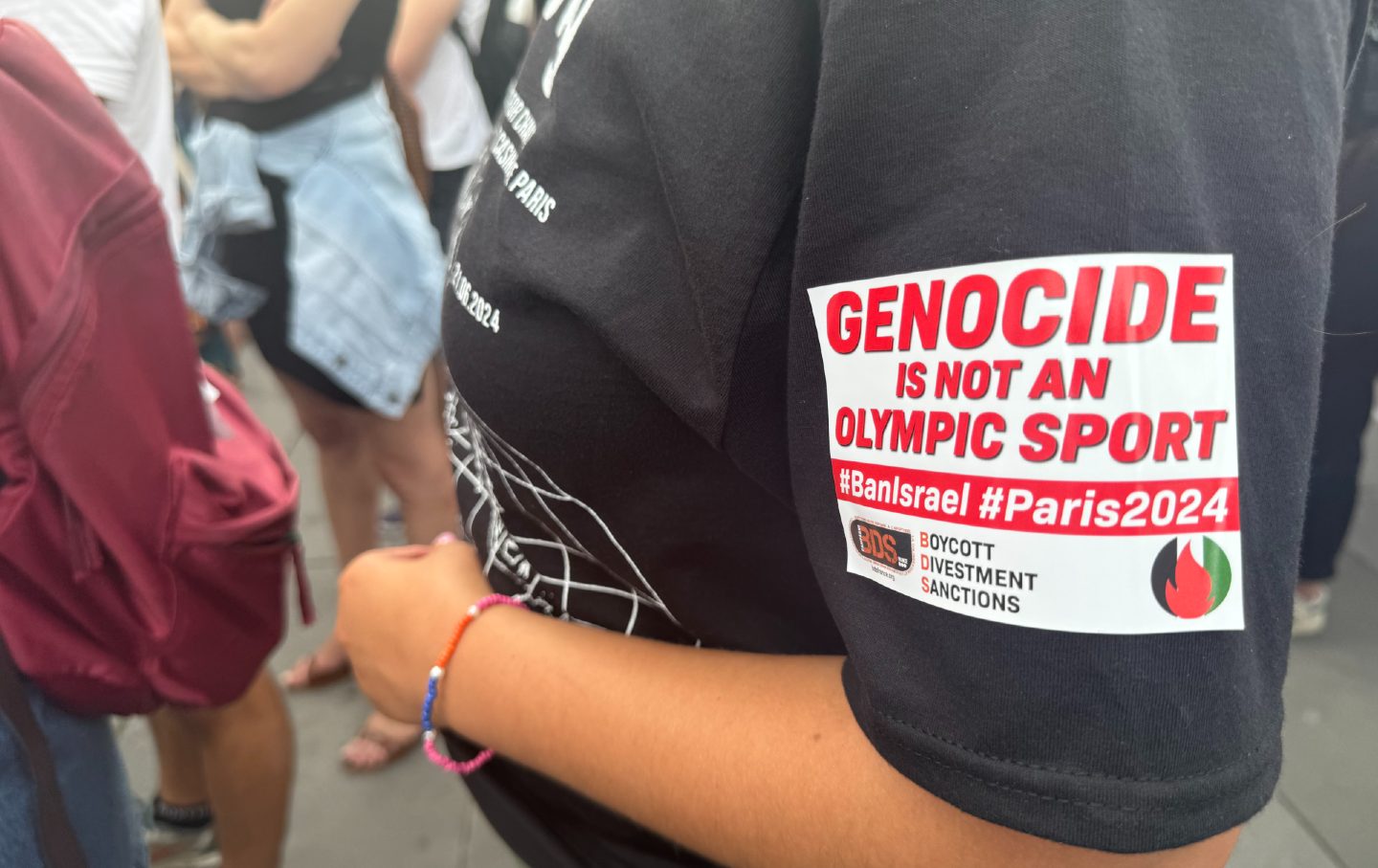
The Paris Olympics Are Kicking Off With Protests The Paris Olympics Are Kicking Off With Protests
“The Olympic Games are profoundly disrupting the lives of French people,” the protesters wrote in a joint statement.“The question then arises: Who benefits from the Games?”
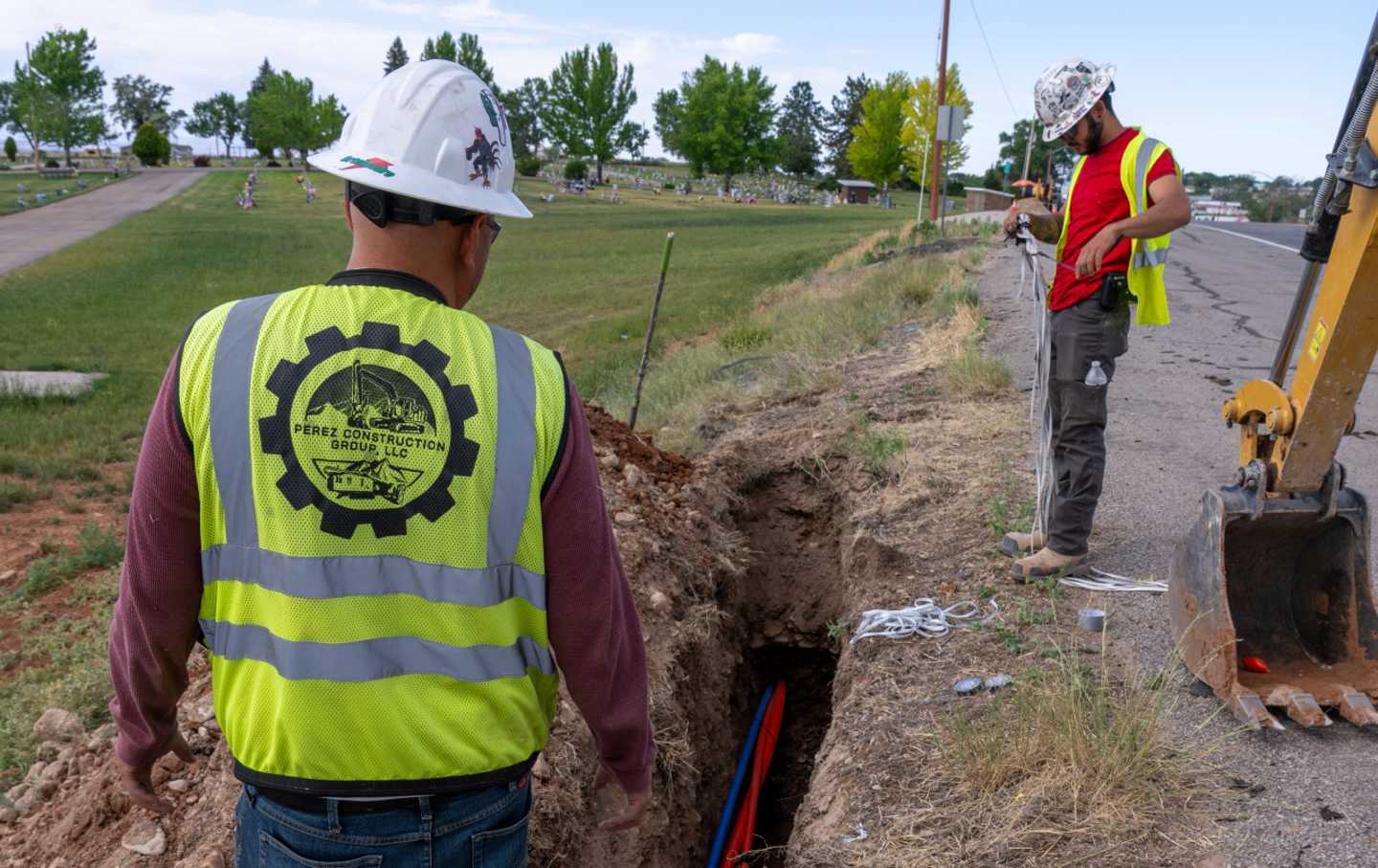
Working-Class Americans Prefer a “Hand Up” to a “Handout” Working-Class Americans Prefer a “Hand Up” to a “Handout”
Working- and middle-class Americans take pride in their work. If Democrats want to win their votes, they need to acknowledge and appeal to that pride, not dismiss or patronize it....
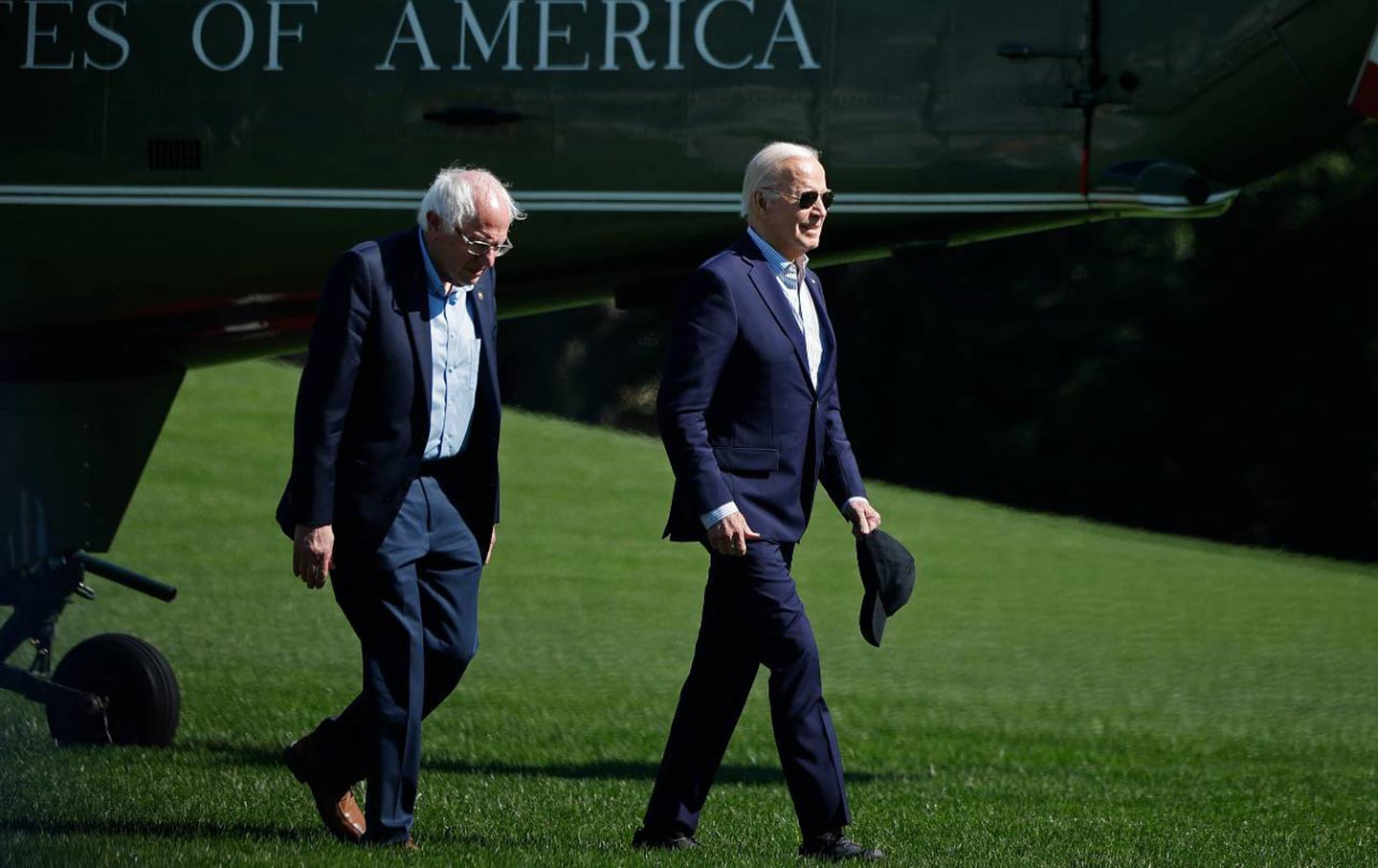
Why Are Bernie Sanders and the Squad Propping Up Joe Biden? Why Are Bernie Sanders and the Squad Propping Up Joe Biden?
A wounded Biden is running on a platform that progressives have long dreamed about.

A Proposed Regulation Could Protect Millions of Workers From Extreme Heat A Proposed Regulation Could Protect Millions of Workers From Extreme Heat
As temperatures continue to rise from climate change, OSHA’s first and only extreme heat proposal would help over 36 million people.
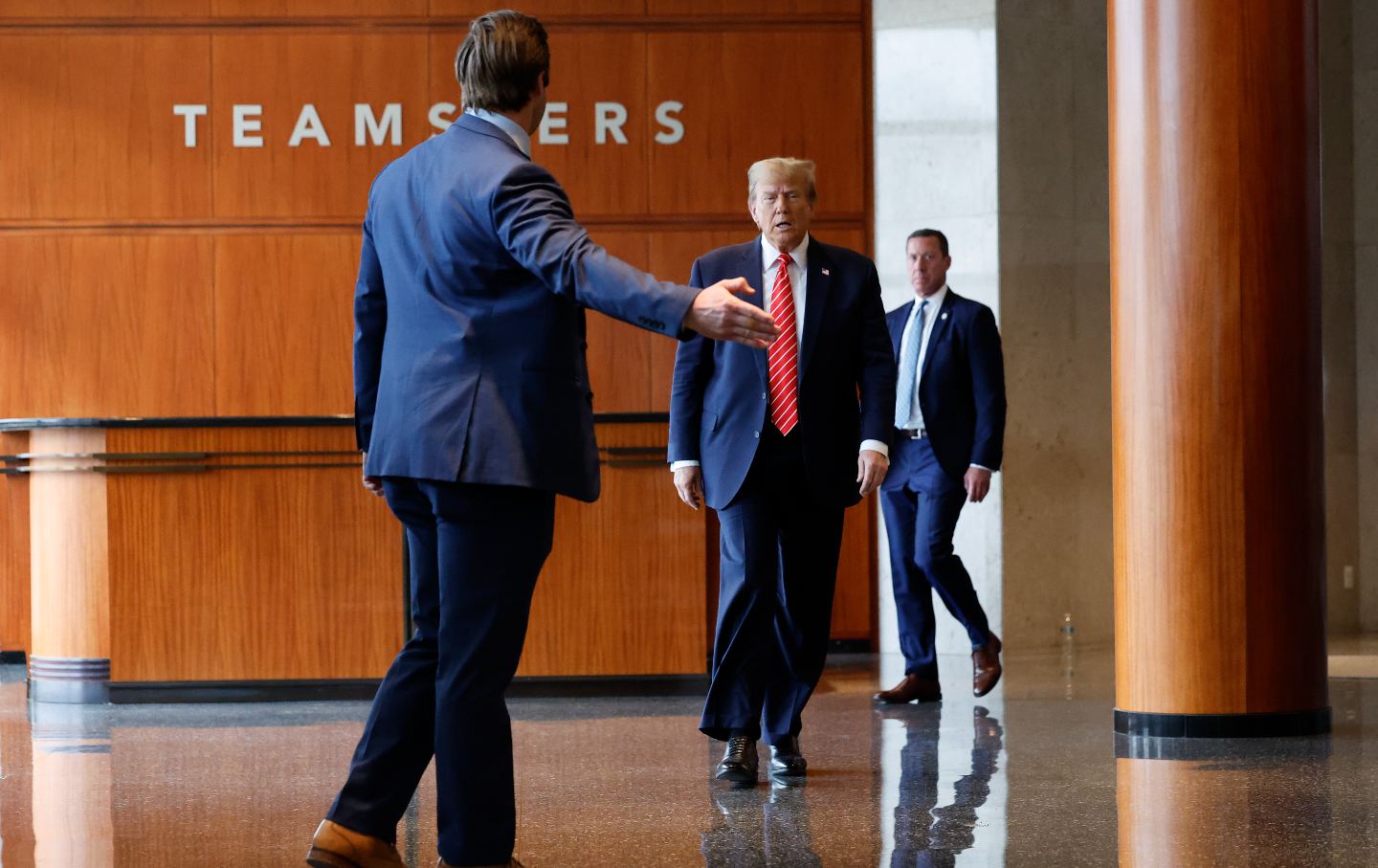
Donald Trump Is Not a Friend to American Workers Donald Trump Is Not a Friend to American Workers
Despite Sean O’Brien’s support for Trump at the RNC, let’s be clear: A second Trump term would not be a win for the labor movement.
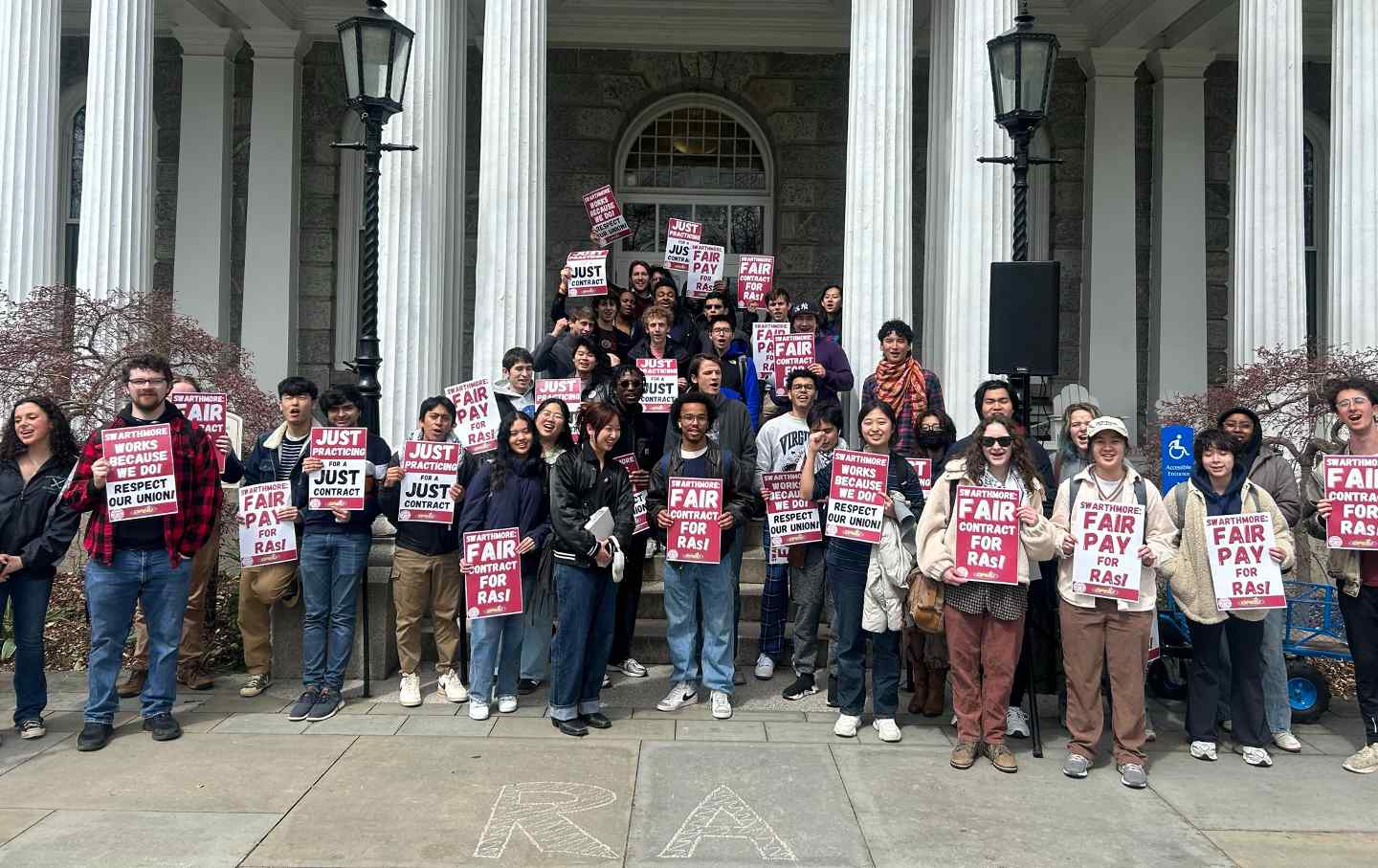
Despite Bargaining Slowdowns, RA Unions Are Still Booming Despite Bargaining Slowdowns, RA Unions Are Still Booming
As college costs continue to increase, undergraduate Residential Assistants are organizing for better pay and working conditions.


